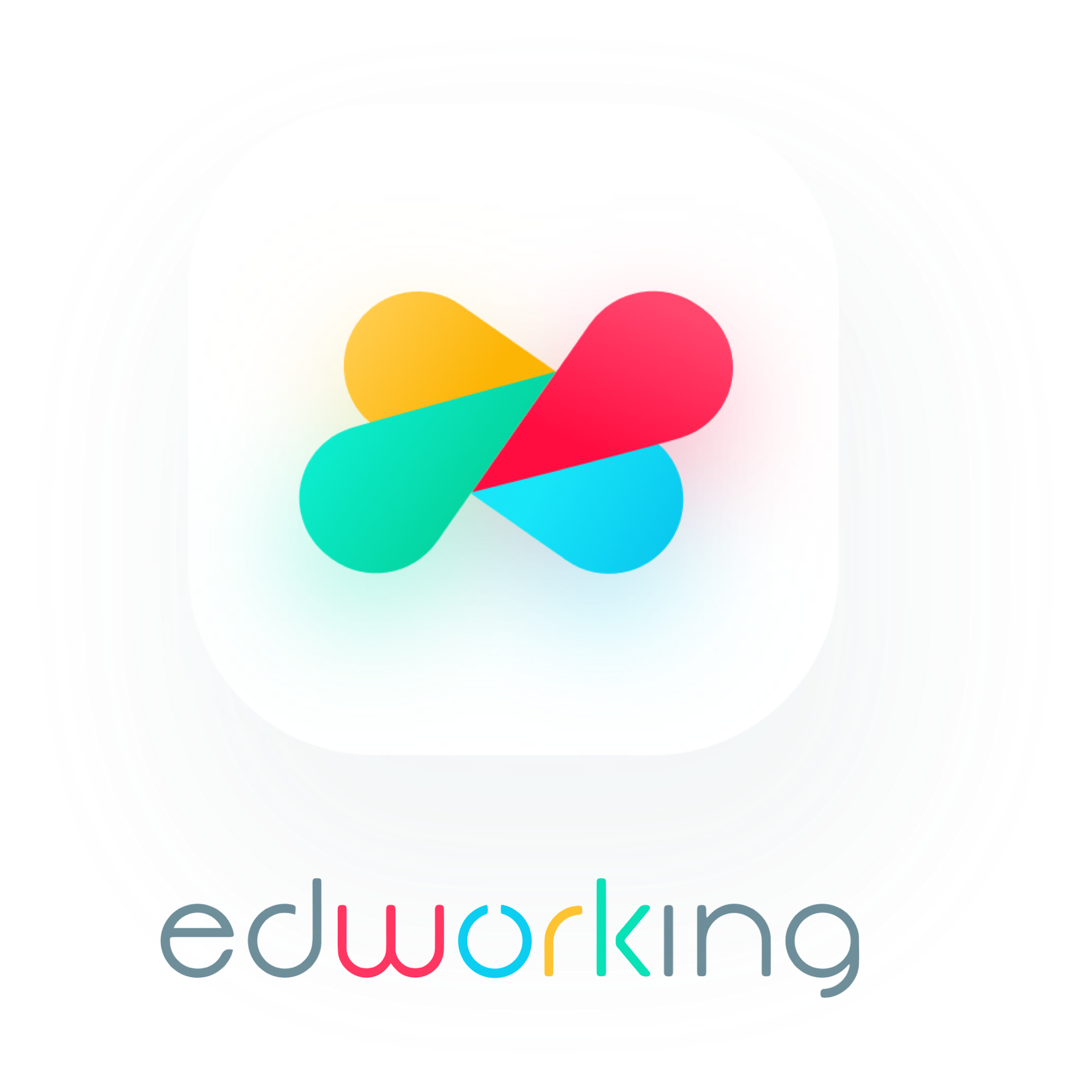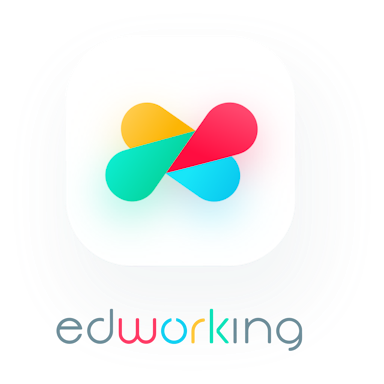In the ever-evolving landscape of remote work, communication has become the lifeblood of productivity and collaboration. Whether you're leading a global team or freelancing from your favorite café, how your team communicates can either supercharge your workflow—or slow it to a crawl. That’s where the debate between asynchronous and synchronous communication comes in.
You’ve probably heard these terms tossed around: async work means communication that doesn’t require an immediate response, like emails or project updates in Edworking. Sync work, on the other hand, happens in real time—think video calls or live chats.
As we step deeper into 2025, remote teams are increasingly faced with one big question: Which type of communication actually works best? Is it better to give people space and flexibility, or to keep everyone in sync with live check-ins?
In this article, we’ll dive into both methods, explore the pros and cons, and help you build the right balance for your team. Because the truth is, choosing between async and sync isn’t black and white—it’s about finding the right mix for sustainable success.
 Understanding Async and Sync Communication
Understanding Async and Sync Communication
What Is Asynchronous Communication?
Imagine sending a message without expecting an immediate reply—just like leaving a note on someone’s desk. That’s asynchronous communication. It allows team members to respond on their own time, promoting flexibility and deep focus.
Common examples of async work include:
- Emails
- Project management comments (e.g., Trello, Notion)
- Pre-recorded video updates (like Loom)
- Edworking Stories and Docs
This communication style is especially popular with remote teams spread across different time zones. It empowers people to process information thoughtfully, respond when they’re at their best, and avoid the pressure of “instant replies.”
What Is Synchronous Communication?
Now picture a live conversation—whether it’s a Zoom call, a quick Slack chat, or a Monday morning video huddle. That’s synchronous communication, where team members interact in real time.
Examples include:
- Video conferencing (Zoom, Google Meet, Edworking)
- Live chats or direct messages
- Real-time collaboration on shared docs
- Phone calls or quick team stand-ups
Sync communication thrives on speed and immediacy. It’s great for brainstorming, urgent decisions, or just checking in with your team face-to-face (well, virtually).
So, what’s the catch? With sync communication, everyone has to be available at the same time, which can get tricky in global teams.
 Benefits and Challenges of Async Work
Benefits and Challenges of Async Work
Benefits of Async Communication
Let’s face it—nobody enjoys back-to-back Zoom calls or chasing Slack messages at midnight. That’s why async work is becoming a favorite among remote teams. It gives people the space to do what they were actually hired to do: work.
One of the biggest perks? Deep focus. Async communication reduces the number of constant pings and interruptions, letting you get into a flow state without breaking it every ten minutes.
It’s also ideal for distributed teams. When everyone’s working from different time zones, waiting for a reply isn’t a bug—it’s a feature. Async empowers people to respond when it suits them, not when their calendar says they “should.”
Another underappreciated benefit: built-in documentation. Since most async conversations happen in writing or recorded formats, they naturally create a searchable record of decisions and updates. No more digging through meeting notes.
Tools that support async work especially well
- Email – Still reliable for non-urgent communication.
- Loom – Perfect for sharing screen-recorded walkthroughs and updates.
- Edworking – Offers Docs, Stories, and task boards for async collaboration.
- Notion – Great for shared knowledge bases and project planning.
- Trello – Visual task boards that don’t rely on real-time communication.
Challenges of Async Communication
But async isn’t perfect. Let’s be honest—waiting for replies can slow things down. You can’t just walk over to a teammate’s desk and ask a quick question.
Another downside? The risk of miscommunication. When you rely on text or recorded messages, tone and intent can easily get lost in translation. Without live feedback, it’s easier for misunderstandings to snowball.
And then there’s the skill gap: not everyone is a great communicator in writing. Async teams depend heavily on clarity and context—if a message isn’t well written, confusion follows.
Still, when async is done well, these issues become manageable. The key lies in setting expectations and using the right tools—which we’ll explore next.

 When to Use Sync Communication
When to Use Sync Communication
Best Use Cases for Sync Work
While async communication promotes autonomy, there are still moments when being “in the moment” matters. That’s where sync work shines. It’s perfect for situations that thrive on real-time energy and immediate feedback.
Need to brainstorm a new campaign? Sync it. Facing a team conflict? Hop on a call. Want to keep morale high? A virtual coffee chat can do wonders.
Live communication strengthens human connection—a critical ingredient that often gets lost in fully remote teams. Face-to-face interaction, even over video, helps build trust and camaraderie that async simply can’t replicate.
Downsides of Sync Communication
But the benefits come with a price. The first culprit? Zoom fatigue. Too many live meetings can leave teams mentally drained and physically exhausted.
Scheduling is another headache. If your team spans multiple time zones, finding a “good time for everyone” can feel like solving a Rubik’s Cube... blindfolded.
And finally, there’s the productivity paradox: while sync meetings feel productive, they often interrupt deep work. A 30-minute call can cost an hour of flow time, breaking concentration and momentum.
In 2025, most remote teams are learning that sync communication works best when it’s intentional, not habitual. Less is more—and using sync sparingly makes it more impactful.
 The Ideal Mix: Hybrid Communication for Remote Teams
The Ideal Mix: Hybrid Communication for Remote Teams
The 70/30 Rule in 2025
In a world where flexibility reigns supreme, most successful remote teams are embracing a hybrid communication model. That means combining the best of both async and sync methods—not favoring one blindly over the other.
The sweet spot? Many organizations now follow the 70/30 rule:
- 70% async to encourage focus, flexibility, and autonomy.
- 30% sync to build team spirit, solve problems quickly, and align priorities.
This balance supports deep work without isolating people. Because let’s be real: the main difference between a thriving remote team and one that just barely functions often comes down to communication strategy—not talent.
Suggested weekly sync moments that enhance team dynamics:
- Monday kickoff call – Align on weekly goals and priorities.
- Midweek brainstorming session – Tackle creative challenges together.
- Friday team check-in or virtual coffee – Reflect, bond, and celebrate wins.
These touchpoints bring rhythm to async-heavy workflows, keeping teams connected without overwhelming them with calls.
Creating a Communication Playbook
If you want your hybrid strategy to stick, you’ll need to set some ground rules. A communication playbook lays out how and when to use each channel—and helps avoid guesswork.
What should you define?
- Expected response times for each channel.
- Preferred tools for async vs. sync updates.
- Tone, language, and formatting for clarity.
For example, Edworking’s Stories might be your go-to for project updates (async), while live chat handles quick blockers (sync). The goal is to match the message to the medium—every time.
 How Edworking Bridges Async and Sync Communication for Remote Teams
How Edworking Bridges Async and Sync Communication for Remote Teams

Supporting the Full Communication Spectrum in 2025
For remote teams trying to balance async work and real-time collaboration, the biggest challenge isn’t choosing between the two—it’s managing both without friction. That’s exactly what Edworking is built for.
As a comprehensive remote work platform, Edworking is designed to bridge the gap between asynchronous and synchronous communication. It brings all your workflows into one streamlined environment, so teams don’t waste time juggling tools.
For asynchronous workflows, Edworking includes:
- Task Boards for managing to-dos, assigning tasks, and tracking progress without constant interruptions.
- Docs for shared knowledge and collaborative documentation—ideal for updates, planning, or deep thinking.
- Stories to post project highlights or milestones in a non-disruptive, visual way.
For synchronous needs, Edworking integrates:
- Video calls and screen sharing to enable live discussions and team alignment.
- Real-time chat for quick clarifications or brainstorming bursts.
- Shared workspaces where teams can collaborate on-the-fly and make decisions fast.
By seamlessly supporting both async and sync styles, Edworking helps remote teams communicate intentionally, not reactively. It empowers organizations to stay flexible, focused, and connected—all in one place.
 Conclusion
Conclusion
Choosing between asynchronous and synchronous communication isn’t a matter of picking sides—it’s about understanding your team’s rhythm and building a system that supports it. In 2025, the most successful remote teams aren’t going all-in on one approach. Instead, they’re using a hybrid model to get the best of both worlds.
Async work gives people the space to think, create, and focus without constant interruptions. Sync moments, when used intentionally, build connection, foster creativity, and keep everyone aligned.
The main difference between effective and chaotic communication isn’t the tools—it’s how you use them. By combining both methods wisely and supporting them with the right platform, your team can thrive in a remote-first world.
And with solutions like Edworking simplifying the process, there’s never been a better time to get your team’s communication strategy right.







